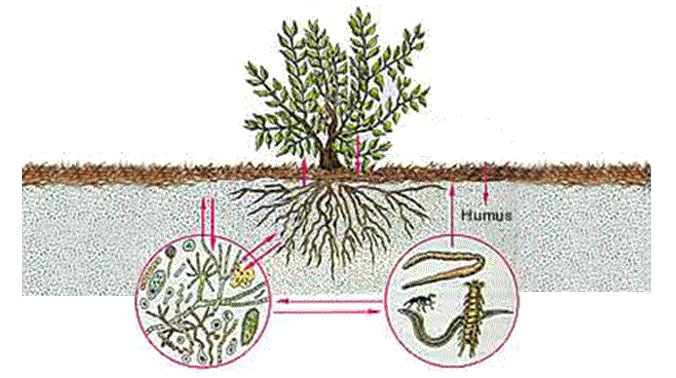The soil has a very limited potential for exchange with roots.
The rhizosphere is generated by the action of plants that modify their environment for needs which are fundamental to their survival.
It substantially differs from the rest of the soil due to:
- specific microbial symbiosis;
- marked presence of organic compound
- lower ion concentration
- lower pH;
- Lower oxygen content
The rhizosphere is inhabited by a large, very active population whose existence depends essentially on the organic compounds released into the soil by roots.

L’alta disponibilità di The high availability of soluble Organic Carbon in AGROGEL® ® grants a highly active rhizosphere: a most important factor because bacteria feed on organic carbon and plants feed on the elements that bacteria and fungi provide them with.
iving beings suffer constant energy loss (they intake energy from the external world), as their vital activities produce energy forms that are mostly unusable for metabolic purposes (for example: heat).
The main energy form in the environment is light.
Definitions…
AUTOTROPHS:
gli organismi che ricavano energia dalla luce (fotoautrotrofi). are organisms that procure energy from light (photoautotrophs). They transform air car-bon dioxide and nitrogen from nitrates and mineral salts into organic matter. The most important auto-trophs for the carbon cycle are mainland forest trees and phytoplankton in the oceans.
The photosynthesis reaction is 6CO2 + 6H2O –> C6H12O6 + 6O2
HETEROTROPHS
are unable to exploit light or inorganic substances. They are forced to intake carbon and, in the eventuality, nitrogen by using compounds synthesized by other living beings. The existence of heterotrophs requires organic matter producers. Fungi and bacteria use organic residues and turn carbon into CO2 when oxygen is present, and into CH4 when oxygen is absent.
